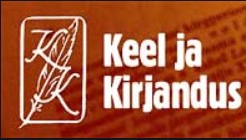Kadunud linna otsimas: Sõjajärgse Tartu palimpsest Bernard Kangro ja Jaan Kaplinski romaanides
In search of a lost city: The palimpsest of post-war Tartu in Bernard Kangro’s and Jaan Kaplinski’s novels
Author(s): Ene-Reet SoovikSubject(s): Comparative Study of Literature, Estonian Literature, Rural and urban sociology, WW II and following years (1940 - 1949), Post-War period (1950 - 1989), Theory of Literature, Politics of History/Memory
Published by: SA Kultuurileht
Keywords: urban literature; palimpsest; bridges; monuments; Tartu; Bernard Kangro; Jaan Kaplinski; Michel de Certeau:
Summary/Abstract: The article focuses on two literary depictions of the city of Tartu as examples of palimpsestic treatment of a city space recovering from major damage incurred in WWII and reshaping itself in the changed political climate of the ensuing Soviet occupation. The novels Tartu (1962) by Bernard Kangro and The Same River (2007) by Jaan Kaplinski feature the same cityscape from around 1960 that the authors have been unable to access directly during the time of writing. The distance is spatial in case of Kangro, whose novel was created in exile, and temporal in case of Kaplinski, whose work was written in the independent Estonia of the 21st century. The texts are discussed, drawing on the notion of the materiality of memory as well as Michel de Certeau’s ideas concerning the spatial practices of walking in the city. The evocation and mental reviving of surviving as well as vanished structures at the expense of new developments, and highlighting space appropriation by naming stand out among the devices operating in Kangro’s novel. Reflecting on attempts at memory modification through demolishing and erecting public monuments, and searching for ideologically unsuitable pasts in private places are predominant in representing the city palimpsest in Kaplinski’s work. Using a typology suggested by Certeau, Kangro’s depiction can be characterised by the selective figure of the asyndeton that operates via deletion from the city representation of new developments and Soviet institutions such as the military airfield and the KGB. Kaplinski’s text, however, zooms in on certain elements, such as monuments serving as public and private memory triggers, and expands their significance, thus serving as Certeau’s figure of the synecdoche. Despite approaching it from different directions, both writers reach out for the same unreal city: the superficially lost, yet imperfectly erased Tartu of the 1930s.
Journal: Keel ja Kirjandus
- Issue Year: LXIII/2020
- Issue No: 10
- Page Range: 819-835
- Page Count: 17
- Language: Estonian

